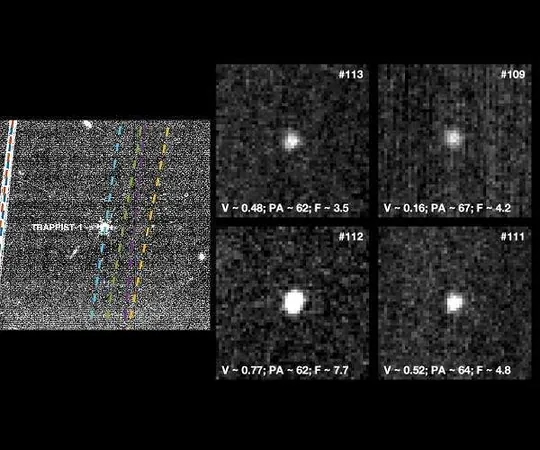
James Webb Telescope Unveils Hidden Population of Small Asteroids in the Main Belt
2024-12-22
Author: Arjun
Groundbreaking Discovery
In a groundbreaking discovery, the James Webb Space Telescope (JWST) has significantly enhanced our understanding of the solar system by uncovering a previously unnoticed population of small asteroids located in the main asteroid belt between Mars and Jupiter. This remarkable finding, detailed in a recent study by a team from the Massachusetts Institute of Technology (MIT), marks a significant advancement in asteroid research.
Observational Breakthroughs
The observational breakthroughs enabled scientists to identify 138 new asteroids, with sizes ranging from that of a bus to a stadium, demonstrating JWST's unparalleled capability in detecting celestial bodies that were previously invisible to ground-based telescopes. The researchers employed JWST's infrared imaging tools while observing the star TRAPPIST-1, leading to the detection of these faint asteroids. This innovative approach offers profound insights into the formation and evolution of the main asteroid belt.
Significance of Findings
Astrophysicist Tom Greene from NASA’s Ames Research Center explained the significance of the findings: "These new insights significantly improve our understanding of how small objects in the asteroid belt are formed and could influence their potential paths through the solar system." He elaborated that these newly discovered asteroids likely originated from collisions between larger asteroids, and they may, over time, drift closer to Earth and the Sun.
Meticulous Analysis
Researchers meticulously analyzed over 10,000 images initially gathered to study the atmospheres of planets, searching for the brief flares of asteroids that passed through JWST's field of view. The telescope's ability to effectively detect dim celestial objects in infrared light was instrumental in identifying these asteroids, which were previously too faint to observe.
Contribution to Planetary Defense
Highlighting the contribution of this research to planetary defense, Jessie Dotson, also an astrophysicist at Ames and a member of NASA's Asteroid Threat Assessment Project (ATAP), remarked, "Understanding these smaller main belt asteroids equips us with the vital knowledge required for monitoring near-Earth objects that could threaten our planet." As part of NASA’s ongoing efforts, insights from these observations will refine strategies for potential asteroid impact mitigation.
Future of NEO Surveyor Mission
In a further stride towards planetary defense, NASA plans to expand the use of infrared technology with its upcoming Near-Earth Object (NEO) Surveyor mission, designed specifically to spot asteroids and comets that may pose a risk to Earth.
Importance of JWST's Capabilities
The research team, spearheaded by MIT’s Artem Burdanov and Julien de Wit, underscored the importance of JWST's capability to reveal previously hidden objects, laying the groundwork for future studies on asteroid dynamics. This pivotal research not only enriches our scientific knowledge but also enhances our preparedness in safeguarding our planet from asteroid-related threats.
Awaiting Future Discoveries
As this remarkable study unfolds, space enthusiasts and scientists alike await further discoveries that the James Webb Space Telescope may unveil about the mysteries of our solar system. Stay tuned for more thrilling developments in the realm of astrophysics!





 Brasil (PT)
Brasil (PT)
 Canada (EN)
Canada (EN)
 Chile (ES)
Chile (ES)
 Česko (CS)
Česko (CS)
 대한민국 (KO)
대한민국 (KO)
 España (ES)
España (ES)
 France (FR)
France (FR)
 Hong Kong (EN)
Hong Kong (EN)
 Italia (IT)
Italia (IT)
 日本 (JA)
日本 (JA)
 Magyarország (HU)
Magyarország (HU)
 Norge (NO)
Norge (NO)
 Polska (PL)
Polska (PL)
 Schweiz (DE)
Schweiz (DE)
 Singapore (EN)
Singapore (EN)
 Sverige (SV)
Sverige (SV)
 Suomi (FI)
Suomi (FI)
 Türkiye (TR)
Türkiye (TR)
 الإمارات العربية المتحدة (AR)
الإمارات العربية المتحدة (AR)